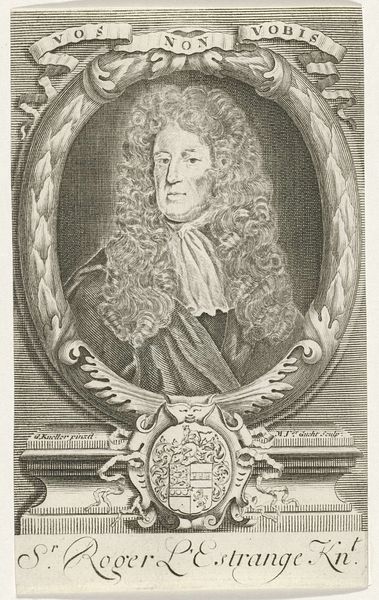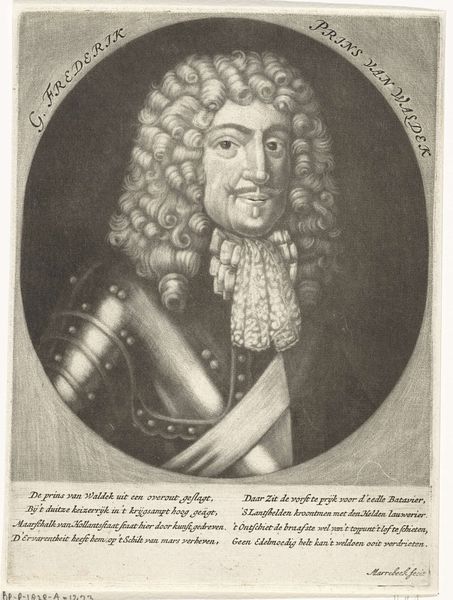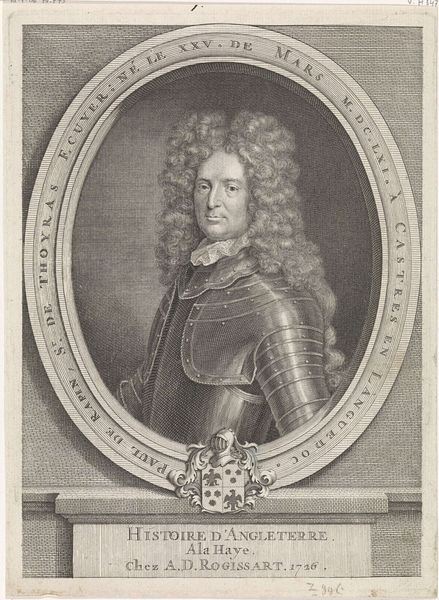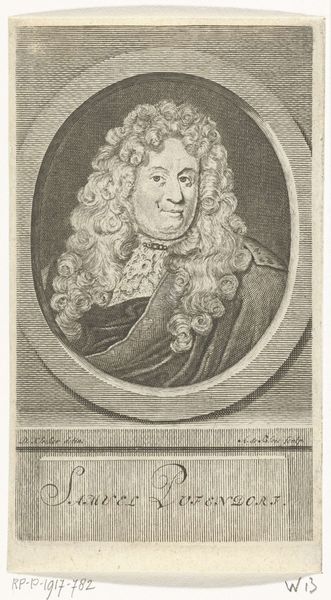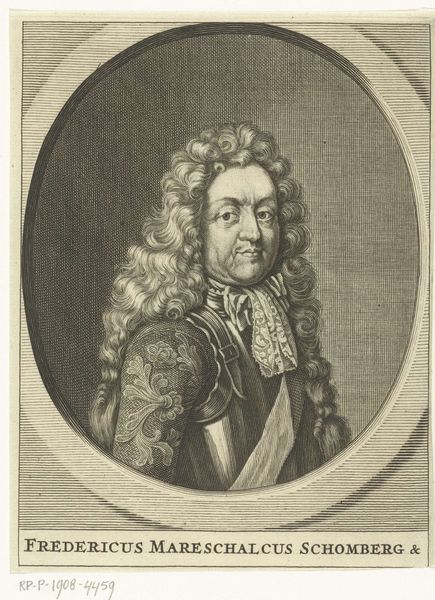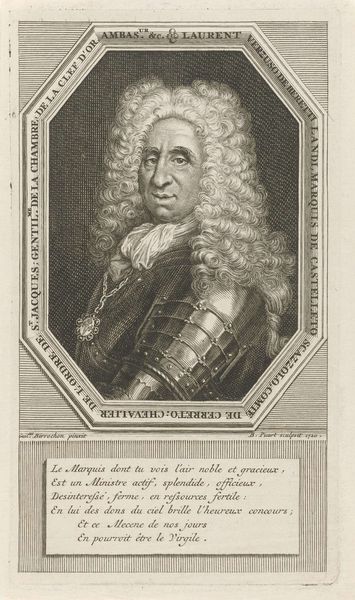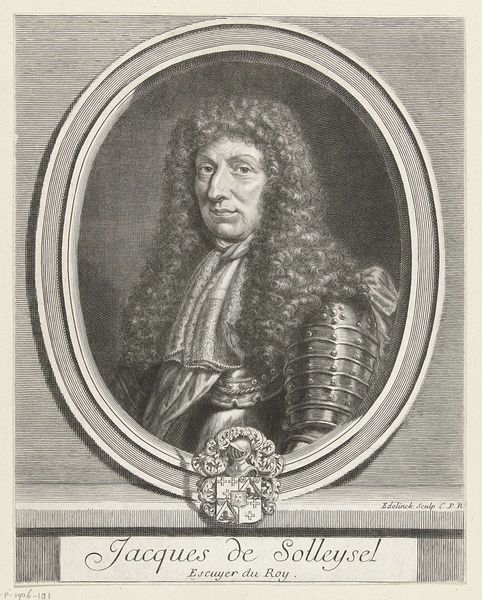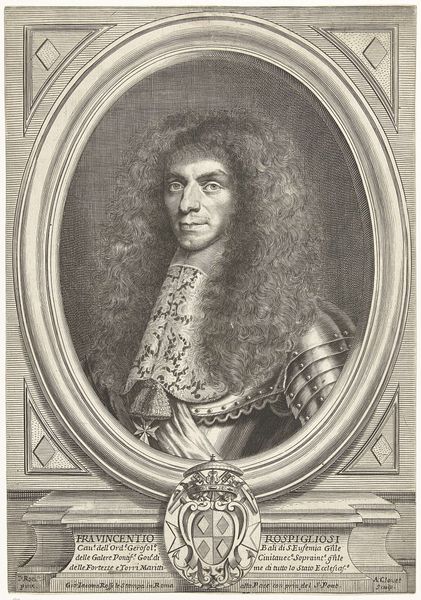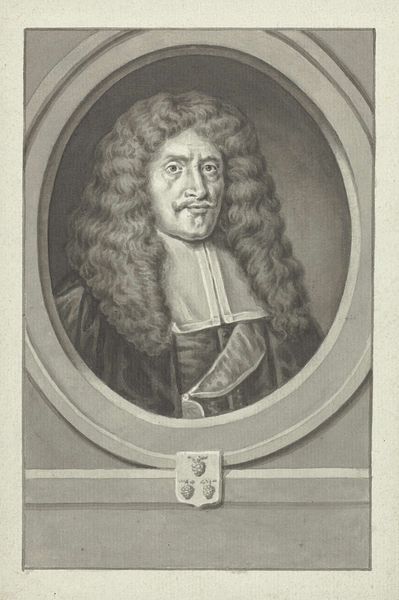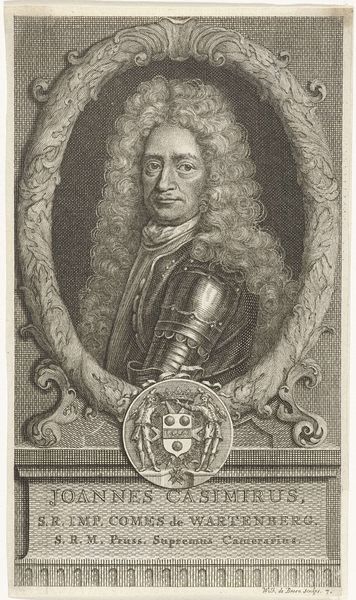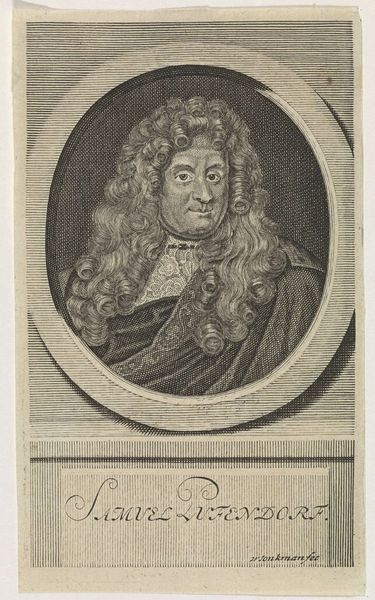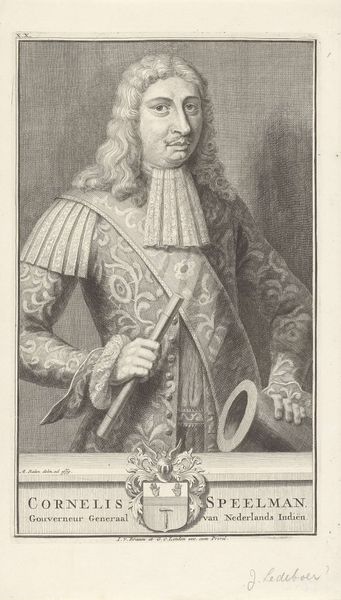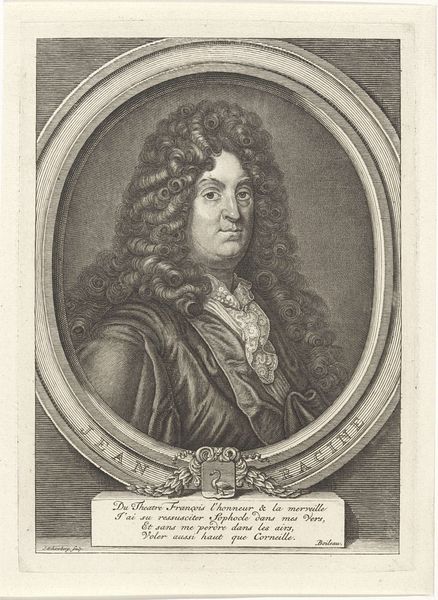
Dimensions: height 311 mm, width 183 mm
Copyright: Rijks Museum: Open Domain
Editor: This is a portrait of Frederik Willem, Elector of Brandenburg, created between 1685 and 1693 by Andries Vaillant. It's an engraving, so a print. What strikes me is how the lettering encloses him, and how elaborately Baroque everything is. What do you see in this piece? Curator: Well, you're right, it *is* remarkably Baroque! But it's not *just* decorative excess, is it? Think about the symbols surrounding Willem. Consider how the very act of enclosing his portrait within an oval of text, almost like a laurel wreath, elevates him, doesn't it? What is the symbolic power there? Editor: I guess it's presenting him as virtuous? Triumphant, even? Curator: Exactly. The text itself reinforces this, listing his many titles and domains, cementing his importance, almost creating a verbal 'aura' to supplement the visual one. It presents not just an individual but an ideal of power, amplified by the wig, the robe and the self assured look in his eyes, of course. Have you ever thought about how power and imagery reinforce each other? Editor: I see what you mean. The image and text work together to build an impression, a narrative about his power. Like visual propaganda? Curator: Precisely. And this wasn't unique to Willem, was it? Think about the portraits of other leaders during this time and before. These carefully constructed images speak volumes about their desire for authority and their use of cultural memory, wouldn't you agree? Editor: Definitely. It’s a masterclass in image management, even centuries later. The artwork has shifted for me from decorative portraiture to calculated propaganda! Curator: Precisely. The power of these images resonate across time!
Comments
No comments
Be the first to comment and join the conversation on the ultimate creative platform.
